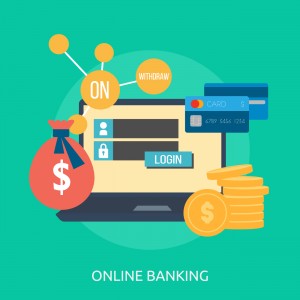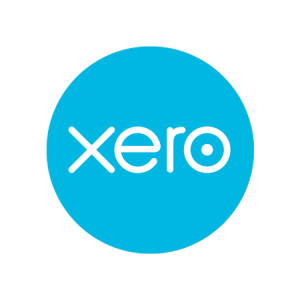This writer was privleged to attend the latest Sydney Fintech event via Glen Frost.
You can find these regular events on meetup.com and Eventbrite.

computer programs and other technology used to support or enable banking and financial services.
There is a palpable gap between the technical finance innovation from the major banks, and smaller start ups and established players in Fintech space.
The definition above sounds purely functional and doesn’t really sound that interesting, like “An icecream is a hard cold mixture of some boring ingredients you’ll find in your fridge.” – it lacks imagination and the sheer potential the Fintech area opens up to improve things for everyone the better.
What FinTech means for me is harnessing technology as a tool to make financial and banking stuff not only much easier, but also much better and more useful.
Technology has been for hundreds of years a catalyst for change and improvement. I can find anyone on the globe instantly and have a video call with them or send them things. I can book a hotel without talking to anyone, and I can tell the world about my business instantly while having a hot bath.
What I couldn’t do, and what I can’t do, has changed a lot in the last 10 years, but much of the FinTech opportunities have yet to be realised. In this post I’ll touch on a few examples of how FinTech has and will change businesses and lives.
1) Xero and the accounting evolution for SME’s.

The file could be exported out of the software, but, as it was the Mac version, the accountant couldn’t send us back the file. So, how do we really learn from that, have a clear understanding of what was done, or sync our records accordingly? Not possible.
The software was also designed for seasoned accountants, terms in there noone really understood if you needed to dip into it as the business owner, and a crazy reconciliation process which involved a lot of clicking.
In 2006-2007 we started trialling an innovative Kiwi company’s product, which we all now know well as Xero. Founded with two leaders in their respective fields – a Kiwi entrepreneur Rod Drury and accountant expert Hamish Edwards. Xero was a truly online accounting software product designed for SME’s, and made it so every stakeholder in the business had access to the information they needed:
-The staff and bookkeeper can lodge information as needed and reconcile accounts.
-The business owner can review the information and advise on issues and adjustments, as well as view critical and up to date reports like the P&L.
-The accountant can prepare annual statements and do anything else they need to do.
I was very enthusiastic from the beginning and told everyone about it. But Xero had tapped into something very special – they had considered as a key concept from the beginning properly, what business owners doing their own bookkeeping – or those doing bookkeeping with a non-accounting background – truly need. And at the time this was a smart way to reconcile stuff for non accountants.
I am sure accountants were repulsed by this system completely and I wouldn’t be surprised if Xero has since made a secret “Accountant’s Only” version of their reconciliation process which is clunky for everyone else to satisfy diehard old school accounting processes!
Their approach was not only smart, but it was very simple too. At the time I was in charge of day to day reconciliation, and I reduced my weekly recon time by at least 4-5 hours overnight. At the time the cloud based subscription software model was a novelty and despite some initial apprehension the software now pays for itself within the first 20 minutes of the week.
Xero essentially reduced reconcilation to an “OK” click button. On the left of the page was the bank statement line said, and on the right was what Xero suggested it was for. Within a few weeks with the volumes of transactions to reconcile, it was at the time already 90% accurate because, let’s face it, reconcilation isn’t exactly a complicated matter.
With the time gone from the process, something very time consuming instantly became something very quick. I observed the process for us at the time dropping from 4 hours a week to 15 minutes. This might all sounds quite simple and silly a decade later, but at the time it was dfiferent and a heck of a lot better.
Two colleagues of mine who both run bookkeeping businesses and who shall remain nameless, thought the whole thing was not going to go anywhere and they had no interest in my enthusiastic sales pitch for them to get on board the FinTech Express. It is worth noting not only do these bookkeepers both work with Xero for their clients, they have actually adjusted their entire business modesl to be centred around this product!
2) Paypal big data decisions

Big Australian banks have up to around 10 million customers each and can make their decisions from there.
Compare that to Paypal who have 350 million customers. If the financial data could be analysed in a smart way, they can make great decisions that are much smarter too. Much smarter than a little bank with 0.3% of the customer base.
One way in which they have focused their efforts is Paypal Working Capital. Some highlights of the product include:
-Preapproval – you get notified when you qualify, you don’t go through an application process with a completely unknown outcome from the start.
-Preapproval means here if you get notified today, you’ll have the funds within 5 minutes.
-The amount is predetermined, as is the repayment cost. If you are approved to borrow $20,000 you will know upfront the entire cost to your business. There is no interest rate. It’s a fixed fee.
-The cost and repayments are based on your trading activity. The higher percentage of your sales that automatically go towards the loan balance the lower the facility is.
-A record is established based on this repayment history and no doubt a million other factors. Once the loan is repaid presuming everything goes well you’ll be eligible to borrow again straight away – different circumstances for each applicant and subject to Paypal’s rules of course.
How this evolves from bank finance for business is on one critical front in particular and that is a much smarter and modern evaluation of the business and is ability to repay loans.
Banks may advise clients they are “eligible” for finance, however in applying the applicant finds it is eligibility for application only, and further application forms and time and process will actually determine whether or not the facility will be approved. Applications may be made and declined with no clear idea about what amount would have been approved and at what level it was declined. Banks may keep their cards closer to their chests because they wouldn’t want a win for the customer. Maybe I am just a pessimist when it comes to outdated practices.
3) Bank payment for goods via a website

Turns out it was an ….. original iteration… of what became quite a handy product once it was refined substantially.
This service concept, which many people still don’t use or even know is available, allowed me to pay and confirm for flights, via the airline website, on the spot but through my bank account. No credit card fees. Money out of my account at the time of the purchase with the differene being there was no lead time for them waiting to confirm they had the funds. It is internet banking for online purchases essentially.
The service has evolved and now there are several key players in the market offering this direct service including Poli and PaymentExpress.com. To explain the brilliant simplicity of this, for those who are interested here’s how it works:
- I go to make an online purchase, and select the relevant payment method for the bank payment option.
- I get taken to a secure page which lets me enter my online banking details*
- A list appears with my bank accounts and available balances.
- I select the account I want to pay from and press OK.
- Payment is accepted and money comes out of my account immediately.
The process is as easy as Paypal and arguably simpler and less time consuming than making credit card payment. It is available for anyone who has internet banking and does not require a credit card. And when making many online payments, the less time it takes the better.
*The sceptics may say there is a risk that bank details could be stolen. My perspective is that arguably that there always remains a risk of fraud or interception of logins and stolen funds in any scenario. A client recently sent a cheque to a supplier, cheque was intercepted and a large sum stolen from their account. Malware on your computer can detect anything you do, as well as the person sitting behind you on the bus, so if you’re going to get done it will happen one way or another.
Summarising all of this
To summarise in just a few examples as above, FinTech is a large opportunity to make all our lives better, through various different means. The improvements are innovative but they may be incremental too. There does not have to be some major shift in how things are done to make a difference. But it helps to shake up a traditional industry.
Designed by Graphiqastock & Liravega/ Freepik
